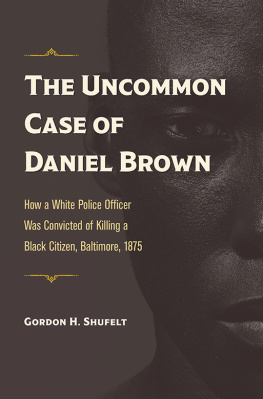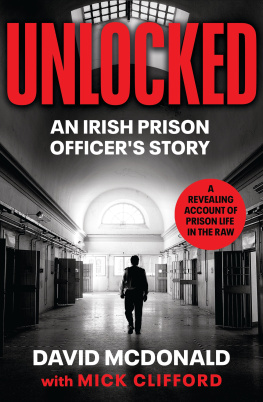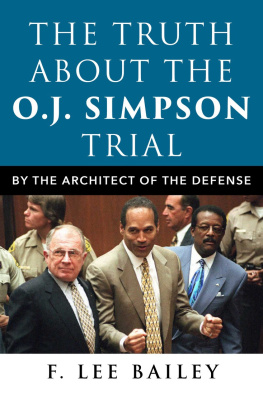Gordon H. Shufelt - The Uncommon Case of Daniel Brown: How a White Police Officer Was Convicted of Killing a Black Citizen, Baltimore, 1875
Here you can read online Gordon H. Shufelt - The Uncommon Case of Daniel Brown: How a White Police Officer Was Convicted of Killing a Black Citizen, Baltimore, 1875 full text of the book (entire story) in english for free. Download pdf and epub, get meaning, cover and reviews about this ebook. year: 2021, publisher: The Kent State University Press, genre: Detective and thriller. Description of the work, (preface) as well as reviews are available. Best literature library LitArk.com created for fans of good reading and offers a wide selection of genres:
Romance novel
Science fiction
Adventure
Detective
Science
History
Home and family
Prose
Art
Politics
Computer
Non-fiction
Religion
Business
Children
Humor
Choose a favorite category and find really read worthwhile books. Enjoy immersion in the world of imagination, feel the emotions of the characters or learn something new for yourself, make an fascinating discovery.
- Book:The Uncommon Case of Daniel Brown: How a White Police Officer Was Convicted of Killing a Black Citizen, Baltimore, 1875
- Author:
- Publisher:The Kent State University Press
- Genre:
- Year:2021
- Rating:4 / 5
- Favourites:Add to favourites
- Your mark:
The Uncommon Case of Daniel Brown: How a White Police Officer Was Convicted of Killing a Black Citizen, Baltimore, 1875: summary, description and annotation
We offer to read an annotation, description, summary or preface (depends on what the author of the book "The Uncommon Case of Daniel Brown: How a White Police Officer Was Convicted of Killing a Black Citizen, Baltimore, 1875" wrote himself). If you haven't found the necessary information about the book — write in the comments, we will try to find it.
An extraordinary look at race and policing in late nineteenth-century Baltimore
In 1875 an Irish-born Baltimore policeman, Patrick McDonald, entered the home of Daniel Brown, an African American laborer, and clubbed and shot Brown, who died within an hour of the attack. In similar cases at the time, authorities routinely exonerated Maryland law enforcement officers who killed African Americans, usually without serious inquiries into the underlying facts. But in this case, Baltimores white community chose a different path. A coroners jury declined to attribute the killing to accident or self-defense; the states attorney indicted McDonald and brought him to trial; and a criminal court jury convicted McDonald of manslaughter.
What makes this work so powerful is that many of the issues that the antipolice brutality movement faces today were the very issues faced by black people in nineteenth-century Baltimore.
Both Brown and McDonald represented factions in conflict during a period of social upheaval, and both men left home to escape dire conditions. Yet trouble followed both to Baltimore. While the conviction of McDonald was unique, it was not a racially enlightened moment in policing. The killing of Brown was viewed not as racial injustice, but police violence spreading to their neighborhood. White elites saw the police as an uncontrolled force threatening their well-being. The clubbing and shooting of an unarmed black man only a block away from the wealthy residences of Park Avenue represented a breakdown in the social orderbut Jim Crow in Baltimore was not in danger.
Prior to 1867 a Maryland statute barred African Americans from testifying against whites in proceedings before police magistrates or in any of the states courts. During the trial of McDonald, the press described the Baltimore police as blue coated ruffians, and there was a general distrust of the police force by both blacks and whites. Browns wife, Keziah, gave damning testimony of Officer McDonalds actions. The jury could not agree on verdicts of first- or second-degree murder, and after an attempt to reach a compromise verdict of second-degree murder failed, the majority acquiesced to the manslaughter verdict.
The Uncommon Case of Daniel Brown adds to the historiography of policing and criminal justice by demonstrating the pivotal role of the coroners inquest in such cases and by illustrating the importance of social ties and political divisions when a community addresses an episode of police violence.
Gordon H. Shufelt: author's other books
Who wrote The Uncommon Case of Daniel Brown: How a White Police Officer Was Convicted of Killing a Black Citizen, Baltimore, 1875? Find out the surname, the name of the author of the book and a list of all author's works by series.








